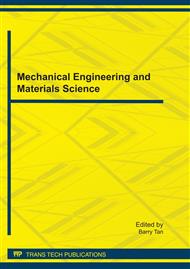p.24
p.30
p.35
p.41
p.48
p.52
p.56
p.61
p.67
Improving the Gas Barrier Property of SBR/Clay Nanocomposite through In Situ Sulfur Modification during Curing Process
Abstract:
Rubber/clay nanocomposites have been explored as alternative materials to replace expensive halogenated butyl rubber. In order to further improve their gas barrier properties, a simple and efficient method through sulfur modification was applied in this work. Excess sulfur was added into SBR/clay nanocompound to prepare sulfur modified nanocomposite via the formation of cyclic sulfide in addition to crosslinking. The vulcanization behavior, mechanical properties, dynamic mechanical property and gas barrier property of the nanocomposites were investigated. It was found that the sulfur modified SBR/clay nanocomposites showed much increased glass transition temperature and lower gas permeability.
Info:
Periodical:
Pages:
48-51
Citation:
Online since:
October 2011
Authors:
Keywords:
Price:
Сopyright:
© 2012 Trans Tech Publications Ltd. All Rights Reserved
Share:
Citation:


